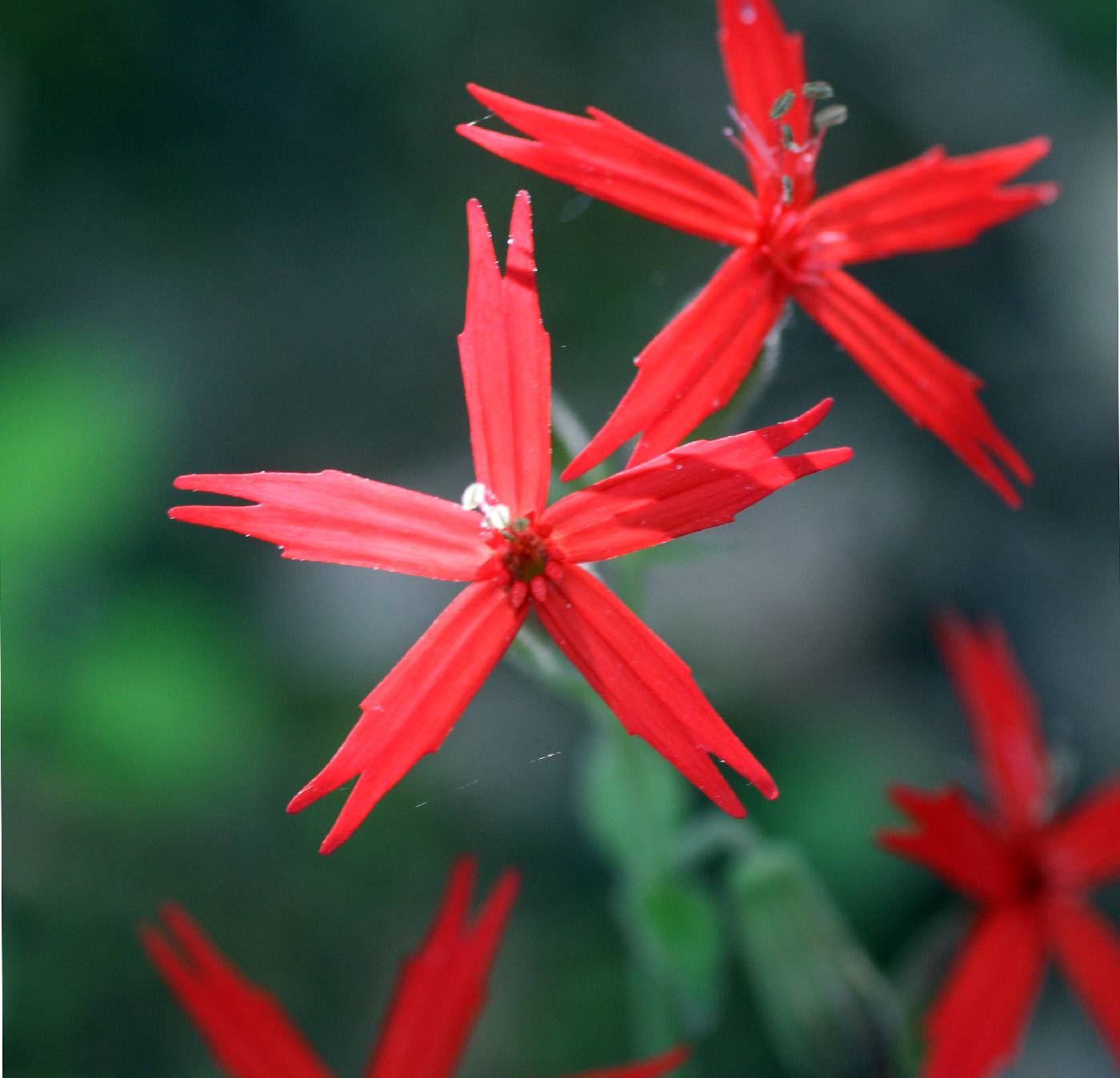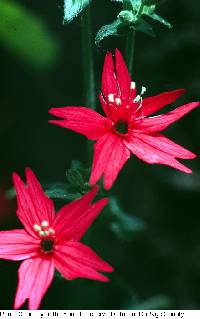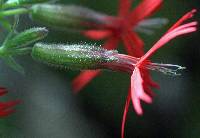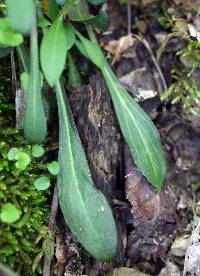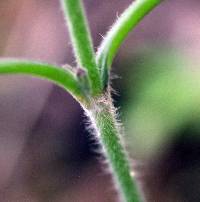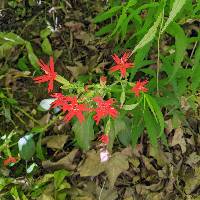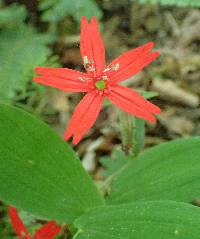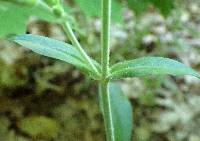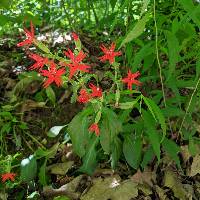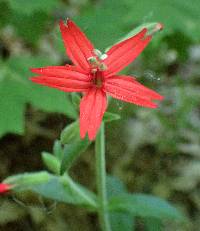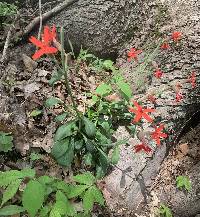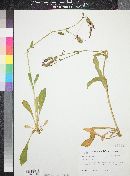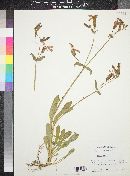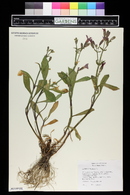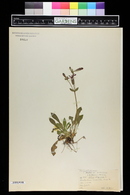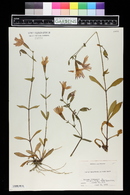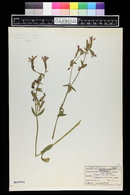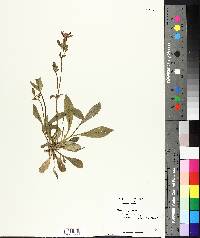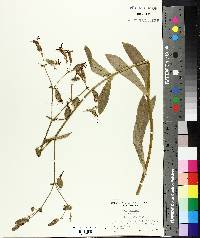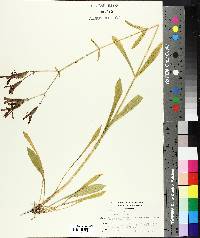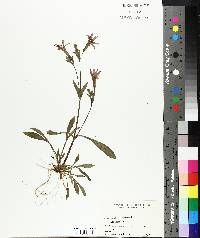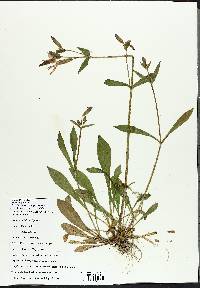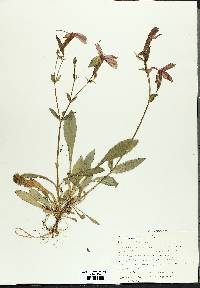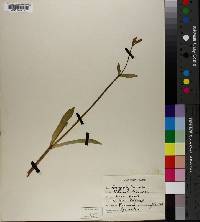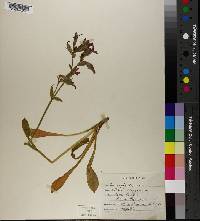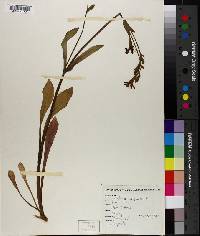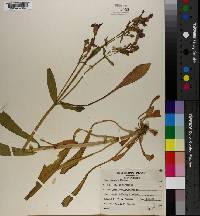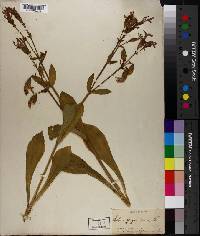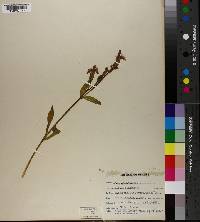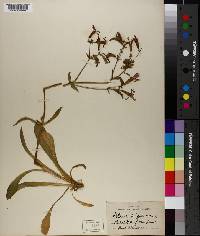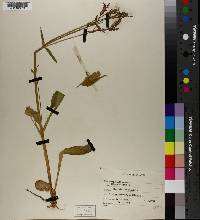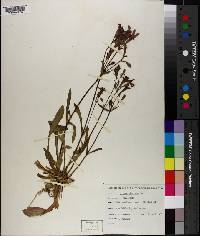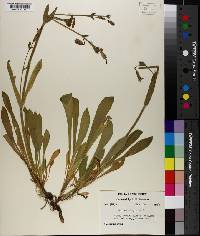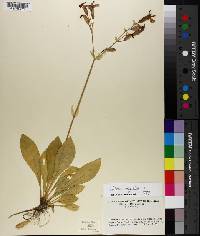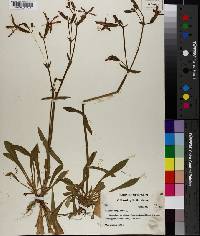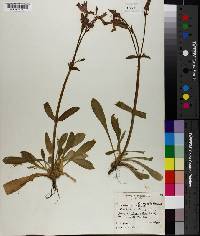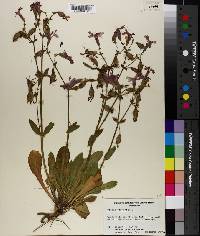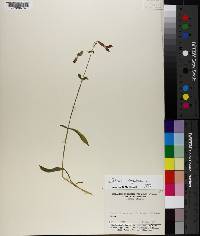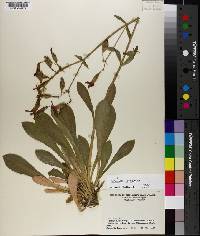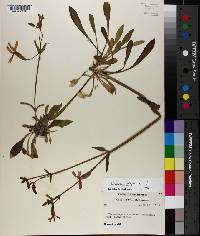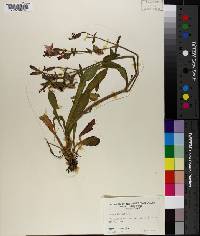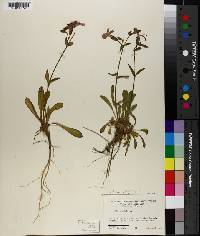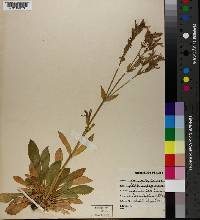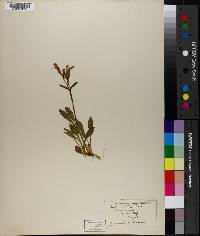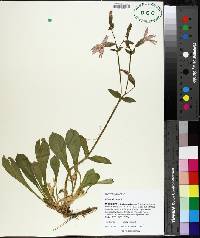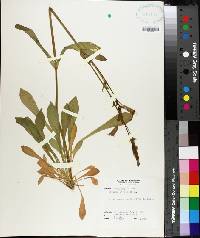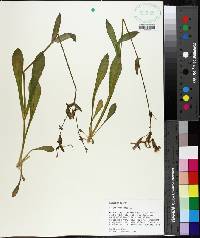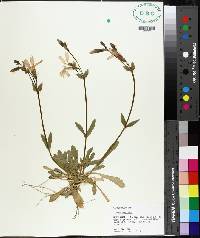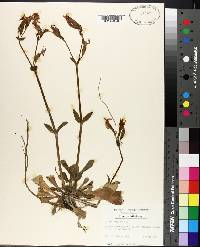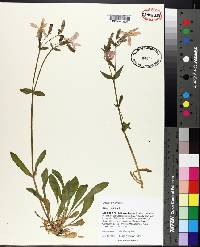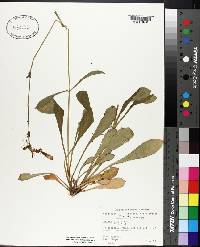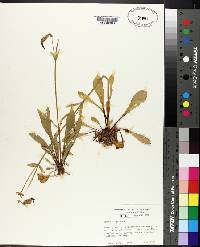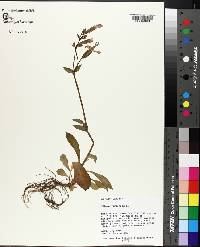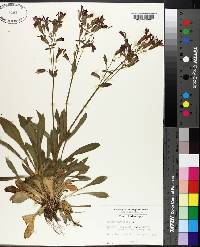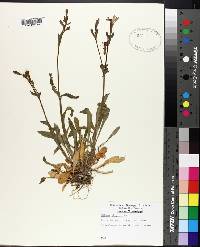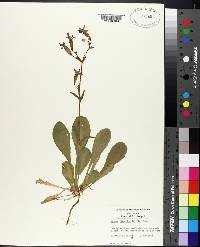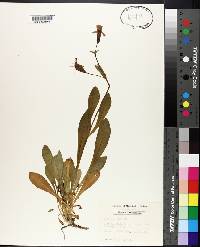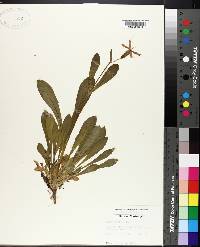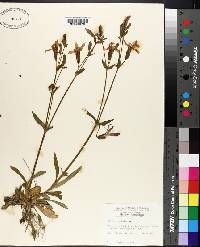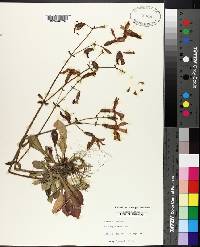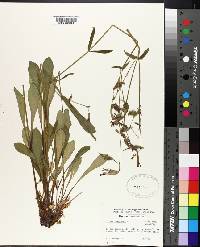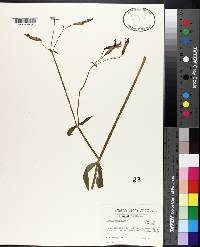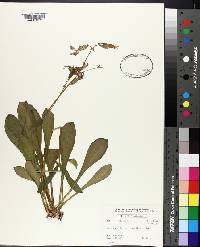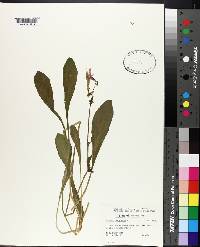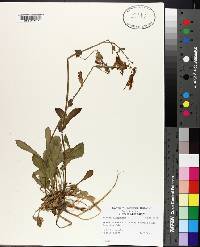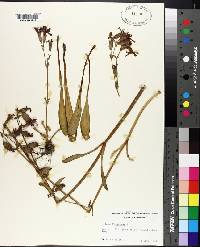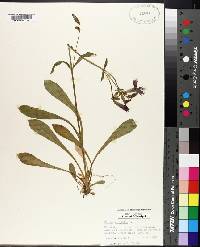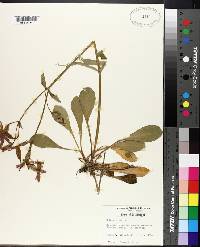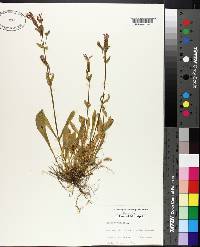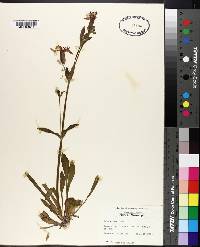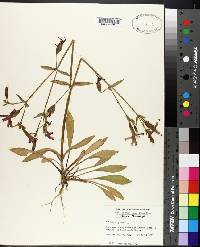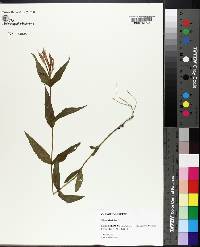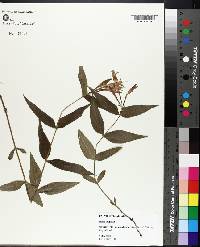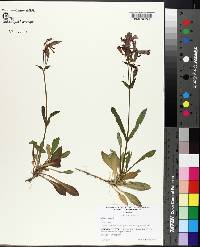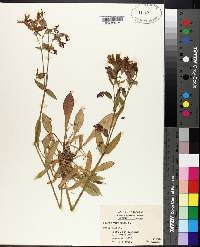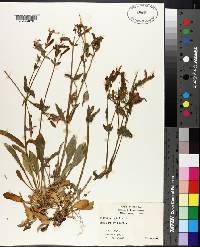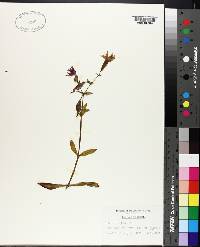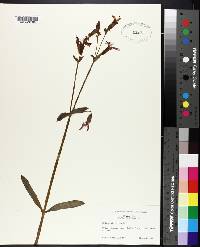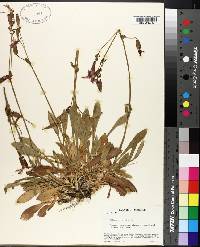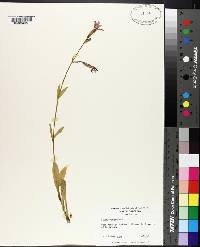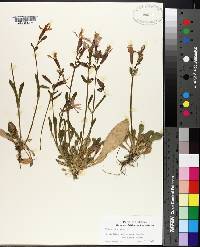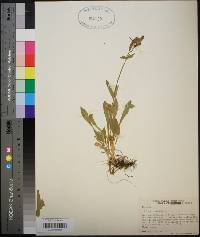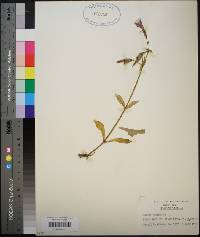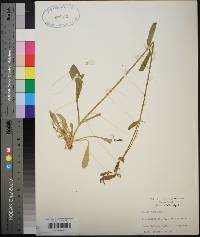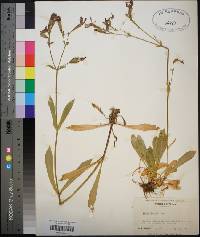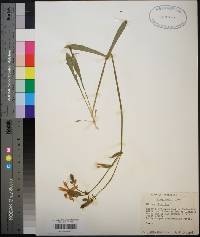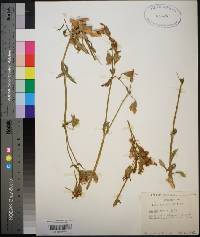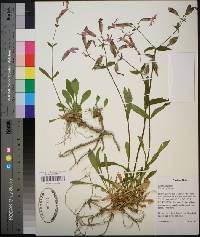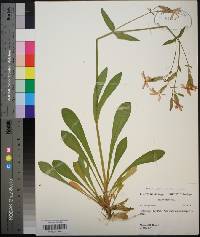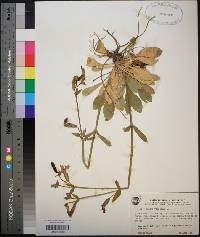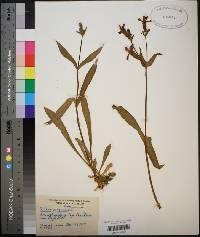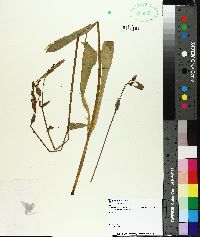
|
|
|
|
Family: Caryophyllaceae
Fire-Pink, more...fire pink
[Silene virginica var. hallensis A.L. Pickens & M.C. Pickens, moreSilene virginica var. robusta Strausbaugh & Core, Silene virginica var. virginica L.] |
Plants perennial; taproot slender; caudex decumbent, branched, producing tufts of leaves and erect flowering shoots. Stems simple proximal to inflo-rescence, 20-80 cm, glandular-pubescent, often subglabrous near base. Leaves: basal numerous, tufted, petiolate, petiole ciliate, blade oblanceolate, 3-10 cm × 8-18 mm, base spatulate, apex acute to obtuse, glabrous on both surfaces, rarely puberulent; cauline in 2-4 pairs, broadly petiolate to sessile, reduced distally, blade oblanceolate to narrowly elliptic or lanceolate, 1-10(-30) cm × 4-16(-30) mm, margins ciliate, apex acute, shortly acuminate, glabrous. Inflorescences open, with ascending, often elongate branches, (3-)7-11(-20)-flowered, bracteate, glandular-pubescent, often densely so, viscid; bracts leaflike, lanceolate, 4-40 mm. Pedicels erect in flower, sharply deflexed at base in fruit, 2-1 times length of calyx. Flowers: calyx green to purple, 10-veined, tubular to narrowly obconic in flower, 16-22 × 5-6 mm, clavate and swelling to 7-12 mm in fruit, glandular-pubescent, lobes lanceolate to oblong, 3-4 mm, margins usually narrow, membranous, apex acute or obtuse; corolla scarlet, 2 times longer than calyx, clawed, claw ciliate, gradually widening into limb, longer than calyx, limb obtriangular to oblong, deeply 2-lobed with 2 small lateral teeth, 10-14 mm, glabrous or nearly so, appendages 2, tubular, 3 mm; stamens exserted, shorter than petals; styles 3(-4), equaling stamens. Capsules ovoid, equaling calyx, opening by 3 (or 4) teeth that sometimes split into 6 (or 8); carpophore 2-3(-4) mm. Seeds ash gray, reniform, 1.5 mm, with large inflated papillae. 2n = 48. Flowering spring. Deciduous woodlands, bluffs, moist wooded slopes; 200-1300 m; Ala., Ark., Del., Ga., Ill., Ind., Iowa, Kans., Ky., La., Mich., Miss., Mo., N.Y., N.C., Ohio, Okla., Pa., S.C., Tenn., Va., W.Va. Silene virginica is related to the scarlet-flowered species from the southwest, S. laciniata and S. subciliata. It makes a beautiful garden plant in semishaded locations. J. A. Steyermark (1963) recorded the occurrence of a hybrid between S. virginica and S. caroliniana subsp. wherryi in Shannon County, Missouri. Reports of the occurrence of S. virginica in Ontario are based on a collection (CAN, K) made in 1873 from 'islands in the Detroit River' in 'Canada West.'
Perennial herb with a slender taproot 20 cm - 0.8 m tall Stem: unbranched, glandular-hairy, often nearly hairless near base. Inflorescence: an elongate-branched, open cluster of typically seven to eleven flowers, glandular-hairy, sticky, subtended by leaf-like bracts. Flowers: scarlet, twice as long as calyx. Stalk upright. Stamens ten, exserted, shorter than petals. Styles three, as long as stamens. Sepals: fused at the base into a tube (calyx). Calyx tube green to purple, 1.6 - 2.2 cm long, 5 - 6 mm wide, swelling in fruit, tubular to narrowly reverse conic, ten-veined, glandular-hairy, with five short lobes. Lobes 3 - 4 mm long and lance-shaped to oblong with a blunt or pointed tip. Petals: five, scarlet, 1 - 1.4 cm long, blade reverse triangular to oblong, clawed, deeply two-lobed with two small, lateral teeth. Fruit: a dehiscent capsule, opening by three or four (sometimes appearing as six or eight) teeth, equal to calyx, egg-shaped. Seeds ashy gray, about 1.5 mm long, kidney-shaped, roughened. Basal leaves: numerous, stalked, 3 - 10 cm long, 8 - 18 mm wide, reverse lance-shaped to spatula-shaped with a blunt to pointed tip, tufted. Stem leaves: opposite, two to four pairs, stalkless to broadly stalked, 1 - 15 (or more) cm long, 4 mm - 3 cm wide, smaller upward, reverse lance-shaped to lance-shaped with a pointed tip, hairy-fringed. Similar species: No information at this time. Flowering: mid-May to late June Habitat and ecology: Local in woodlands. Occurence in the Chicago region: native Etymology: Silene probably comes from the Greek word sialon, meaning saliva, referring to the sticky secretion on many of these plants. It may also have come from the word seilenos, referable to Silenus-a foam-covered, drunken character in Greek Mythology. Virginica means "of or from Virginia." Author: The Morton Arboretum Short-lived perennial, 2-8 dm, at least the stems glandular and puberulent; basal lvs oblanceolate or spatulate, 4-10 cm נ8-18 mm, petiolate; cauline lvs 2-4 pairs, sessile or nearly so, to 15 or even 30 cm and 3 cm wide; infl open, 7-11-fld, leafy-bracteate; cal broadly tubular, 18-22 mm; pet crimson, the tubular appendages 3 mm, the linear-oblong blade 15-22 mm, bilobed; carpophore 2(-4) mm; styles 3, capsule dehiscent by 6 teeth; 2n=48. Rich woods or open woodlands and rocky slopes; N.J. and w. N.Y. to s. Ont. and se. Mich., s. to Ga. and Okla. May-Sept. Gleason, Henry A. & Cronquist, Arthur J. 1991. Manual of vascular plants of northeastern United States and adjacent Canada. lxxv + 910 pp. ©The New York Botanical Garden. All rights reserved. Used by permission. From Flora of Indiana (1940) by Charles C. Deam Frequent to common in rich woodland in all parts of the state except the northern counties of the northwestern part. Pepoon says: "Frequent in open woods from Whiting, Ind., south. Banks of the Des Plaines, abundant. (Babcock). Seems to be an error or the plant is exterminated in the Indiana territory named by Babcock." Babcock did not report this species from Indiana, so this reference may safely be ignored. It did occur, no doubt, in the northwestern part of the state but possibly not near Lake Michigan. …… Indiana Coefficient of Conservatism: C = 7 Wetland Indicator Status: N/A |
|
|
|
This project was made possible in part by the Institute of Museum and Library Services [MG-70-19-0057-19].
Powered by Symbiota

